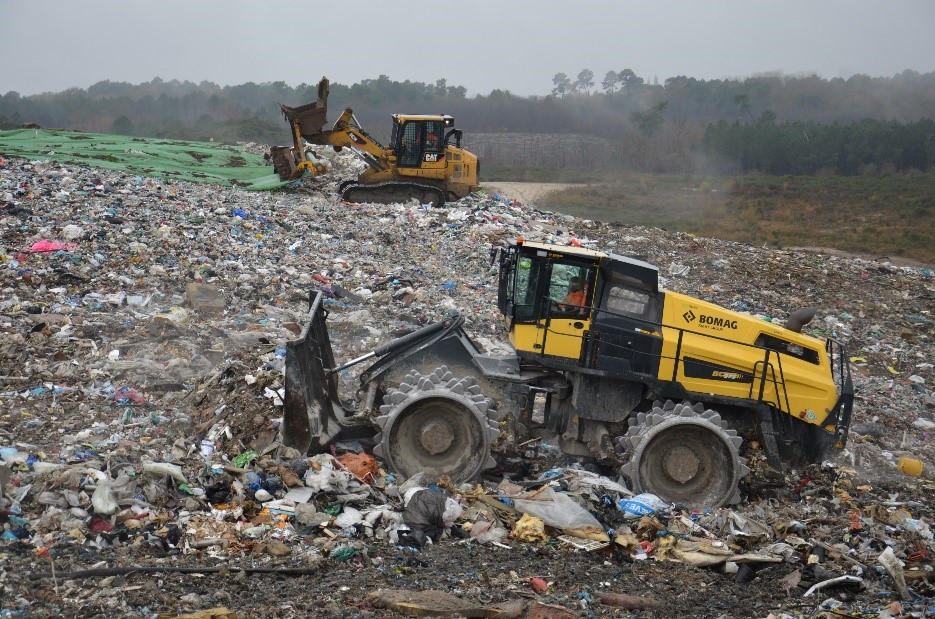Film EcoTop – Concept and technology
Landfills have in the past been traditionally covered with 10-15 cm of compressed soil at the end of the working day, as a protection against the intrusion of rodents and other animals, and avoiding trash to be dispersed by the wind. On the flip side, this represents a considerable loss in space, which could be used for the reception of additional waste.
To answer this problem, SeraPlus has developed EcoTop, a 100% biodegradable and single-use film, with great elasticity and high resistance, offering a perfect alternative to traditional covering with soil.

Time and space-saving
The EcoTop concept helps saving large volumes in a landfill, that would otherwise be occupied by soil (used as cover material). As a result, the landfill can receive more waste, and the overall revenues from waste reception will of course also increase accordingly. Experience has also proven that the deployment time for the EcoTop film is considerably shorter than that of soil cover.
Biodegradability
The biodegradation process, triggered by humidity, together with heat, mechanic stress and the presence of microorganism, starts as soon as the film has been deployed. Biodegradation continues within the landfill over time and the final result is nothing else but CO2, water and biomass. EcoTop meets all the requirements of the EN 13432 norm for compostable products.


Reduction of methane gas emission and leachate production
It is well-known that methane has a much greater negative impact than CO2 as greenhouse gas. Landfills generate large quantities of methane, and it is therefore essential to avoid emissions as far as possible to the atmosphere. The EcoTop film, as opposed to soil, acts as barrier and therefore contributes to improve the efficiency of methane gas collection.
The EcoTop film, as opposed to soil, is 100% waterproof and acts as a barrier and therefore contributes to improve the efficiency of methane gas collection.
In addition, EcoTop reduces as well the infiltration of rain water in to the landfill, which logically also helps minimizing leachate production and the resulting treatment and elimination costs.
Features and benefits
· 100 % biodegradable vegetable-based polymer
· Considerable time saving compared to deployment with soil
· Substantial space-saving compared to soil cover
· Helps significantly to reduce the emission of biogas to the atmosphere
· Protecting shield against rodents, birds and insects
· Efficient odour control
· Contributes to reduce leachate generation by minimizing rainwater infiltration
· Wind and weathering protection
